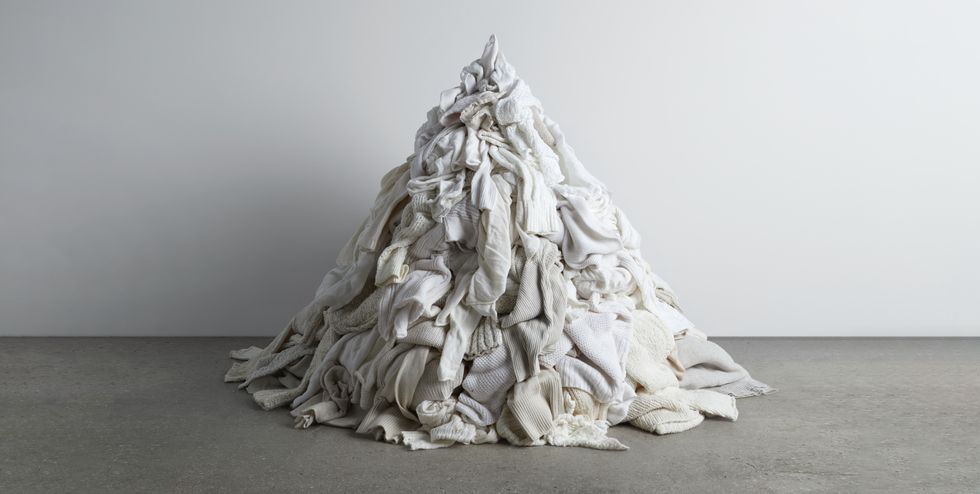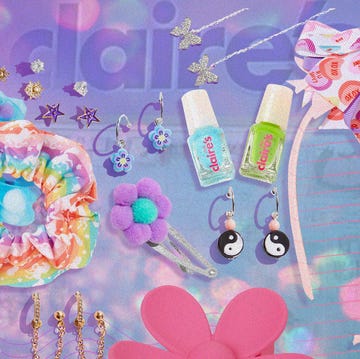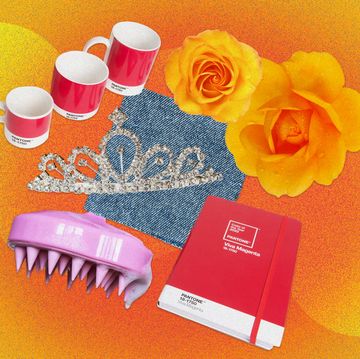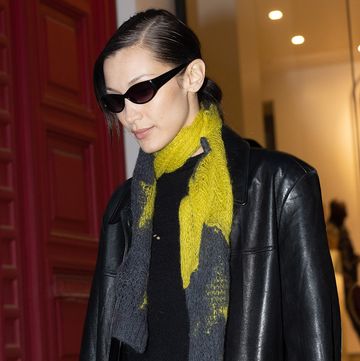Is your closet a little, well, stuffed? You're not the only one. With the rise of fast fashion in recent decades, it's become clear that we've overindulged just a bit in buying clothes. Our closets are as overflowing as our landfills.
One well-known solution to our glut of garments is to buy thrifted items. A newer wrinkle in this thinking is what's become known as “upcycling” — that is, transforming secondhand garments by reworking or embellishing them. This growing trends is a popular way to be eco-conscious and creative at the same time, allowing both fashionistas and bargain hunters the satisfaction of saving an item from the landfill and giving it a second, better life. Upcycling is also taking off just when we need it most, as the problem of textile waste is becoming dire, so buying secondhand is critical. Just look at these sobering facts:
Clearly, changes need to be made.
Thrift and consignment stores always have been “green” alternatives. Now, thanks in part to environmental concerns, clothing resale is booming as never before. The number of thrift stores is rising by 7 percent each year, reports The Association of Resale Professionals. In addition, online resellers such as ThredUp and Poshmark are proliferating.
Upcycling is also on the rise. A quick look at Etsy reveals hundreds of stores full of reworked clothing. Type “upcycled clothing” in the search bar and you’ll scroll through thousands of possibilities, such as skirts made from recycled jeans, boho dresses that used to be flannel shirts and lace tablecloths, jackets with appliqués made from fabric scraps, and old sweaters that have been sliced and diced and reassembled into tunics.
To learn how to make these upcycled garments, and dozens more, there are handy YouTube videos that give step-by-step hacks for any piece of clothing that’s hanging idley in your closet or waiting for you at a thrift store.
Costume designers, particularly those designing for the stage, have long been experts at turning one clothing item into another. They also regularly visit thrift stores for their raw materials.
Angela Lampe, resident costume designer for The Des Moines Playhouse in Iowa, notes that the boom in online shopping has resulted in the loss of brick-and-mortar stores at both the discount and luxury ends of the spectrum.
Lampe said she has trouble finding new basic items, such as plain blouses, without going online. So she regularly scouts thrift stores for basic items. She also looks for dressy garments, which she mines for their fabric or trims, since fabric stores have become an endangered species in many places.
She’ll seek out dressy gowns made from brocades, satins or taffetas, especially in colors that aren’t being featured in the current year. One of her tricks is to buy beaded tops or beaded mother-of-the-bride dresses from the 1980s and 90s, cut them apart and use the best beading to make one stunning cocktail dress. Or, she’ll duplicate the current craze for lace-covered fabrics by thrifting a plain black blazer, and sewing on quantities of black lace that she’s salvaged from another garment.
“I always buy doilies if I see them,” she explains. “You can sew them on as appliques or cut a hole in the center and turn them into lace cuffs.”
Wool items at thrift stores are excellent candidates for a second act. Lampe turns outdated men’s coats and tweed blazers into vests and newsboy’s caps, or cuts the wool into flower shapes that she uses to decorate a plain coat, sweater or hat.
Kate Poppen — a costume designer for the USC Kaufman School of Dance in Los Angeles who also has designed for two professional theaters in Southern California — is also always on the look out for dresses and wool coats to restyle when she shops at thrift stores.
Poppen notes that the current trend for bleached, ombré and shibori dye technique fashions can be duplicated at home on garments purchased secondhand on the cheap. “You can buy a pair of jeans for $15 and do that funky bleach technique or buy a shirt and do ombré dyeing,” she says. “There is a resurgence of crafters these days, and you can find videos on any kind of dye technique you want – using clothespins, blocks of wood or rubber bands to create a dye resist.”
Both costume designers say they regularly check out men’s dress shirts at thrift stores, as they are always in abundance and often in mint condition. (Poppen recalls finding a Ted Baker tuxedo shirt, which retails for $155, for $5.) Fine cotton shirts can be cut up for multiple purposes. Lampe uses 100 percent cotton shirts for quilt projects, or she'll replace shirt collars with a different style or replace sleeves with a different shape to create period looks.
Even if your stitching skills are limited to sewing on buttons or trim, those two skills can go a long way. Couture designers have recently had a love affair with appliqués, and it’s an easy matter to thrift a plain wool sheath, long skirt or jacket and make it your own by adding appliqués. Ditto with buttons. A boring shirt or jacket becomes special when you replace the standard-issue buttons. (If, like most people, there isn’t a fabulous trim or button shop located near you, there are great online sources that ship. Try M&J Trimming and Pacific Trimming, both in New York City’s Garment District, and Benno’s Buttons in Dallas. For spunky embroidery patterns that are not your grandmother’s designs, designer Jenny Hart will ship at sublimestitching.com.)
Thrifted shoes and boots also can be upcycled, although you’ll want to enlist the help of a good shoe repair person.
Fifth generation cobbler Sean Keklikyan, of Village Cobbler in south Los Angeles, can add chains, repair scuffs, re-dye and re-sole shoes, but urges secondhand shoppers to look for real leather. Some imitation leather can be reworked, but he regularly has to tell customers that plastic shoes can’t be renewed the way leather can.
Upcycling may seem like it's only happening on a grassroots level, but even some large clothing manufacturers are embracing the process.
Environmentally aware brands such as Eileen Fisher and Patagonia have pioneered efforts to buy back, repair, recycle and rework their clothing.
Eileen Fisher has one factory in Irvington, New York, and another in Seattle, Washington, devoted to sorting, repurposing and reselling its items. Since 2009, the company has bought back 1.3 million of its garments, which are notable for being made with high-quality silks, wools, cashmeres and cottons. “They are really lovely fabrics, and we want our clothes back,” says Cynthia Power, the director of the company’s RENEW program.
At its RENEW factories, fabrics from returned Eileen Fisher garments are mended, over-dyed, felted or re-sewn into new skirts, coats, vests, jackets, wall hangings and pillows. “We hope to inspire other brands,” says founder Eileen Fisher. “We’re bringing the consumer back into the cycle of refresh and replenish.”
Repair and recycling has been part of Patagonia’s business model for decades, and it operates 72 repair centers globally, as well as a huge facility in Reno, Nevada, where hundreds of worn garments are sent by customers each week for repair. (Some items qualify as vintage, having been purchased as long ago as the 1970s.) Since 2005, the company has been sponsoring mobile repair tours to ski resorts, climbing festivals, surf towns, colleges and elsewhere. On these tours, company techs repair garments regardless of brand and give public tutorials on how to fix clothing. Two years ago, Patagonia launched a “recommerce” business, WornWear.com, which buys products back that are in good condition and resells them online.
On Nov. 14, the company debuted a collection of clothing, ReCrafted, made from Patagonia clothes too damaged to be repaired.
The jackets, shirts, vests and bags are available at pop up stores and on the WornWear.com site.
Ron Hunter, Patagonia’s Activism Manager, says the company does not want its clothing to end up in landfills. “We want to take responsibility for the life of our clothes,” he says. “It’s a partnership with our customers.”
He sums up the mantra that should rule our closets. “Buy it only if you need it. Buy smart.”
Allison Engel is a co-author of ThriftStyle: The Ultimate Bargain Shopper’s Guide to Smart Fashion and https://thriftstyleblog.com/. She is a journalist and playwright (Erma Bombeck: At Wit’s End, Red Hot Patriot: The Kick-Ass Wit of Molly Ivins). Twitter: @allisonengel
Get Shondaland directly in your inbox: SUBSCRIBE TODAY



















